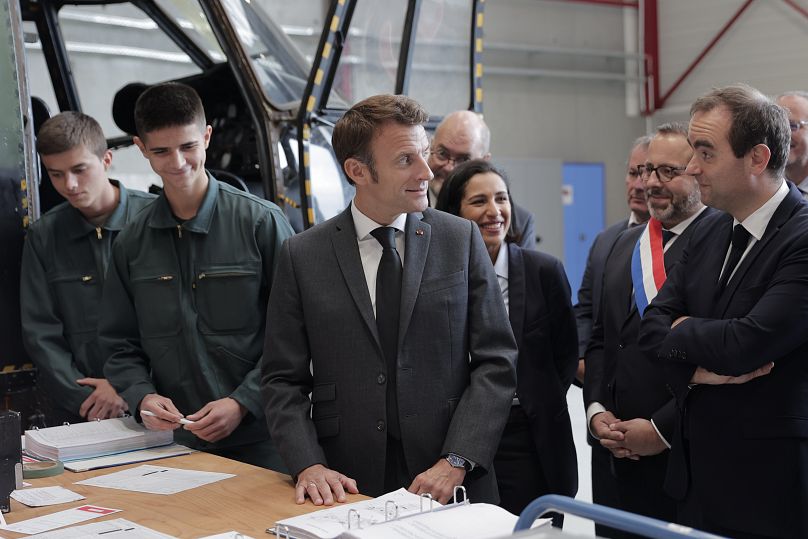A new report by the Stockholm International Peace Research Institute concludes "tensions between Russia and most European countries" explains the spike in weapons arriving in Europe.
Although the international arms market has experienced a decline over the last decade, arms imports into Europe have risen sharply, largely "due to tensions between Russia and most European countries".
That's according to a new report by the Stockholm International Peace Research Institute (SIPRI), which shows a 47% increase in arms imports in Europe when comparing the period 2013-2017 with 2018-2022, despite the overall market falling by 5.1%.
The increase in demand for weapons on European territory is particularly noticeable since the Russian invasion of Ukraine.
Russia in decline as France gains ground
For three decades, Russia has clearly been the second-largest arms exporter behind the United States. Moscow retains its position but has seen its share of the global market fall to 16% and is now closely followed by France with an 11% share.
According to Siemon T. Wezeman, a senior research fellow at SIPRI's Arms Transfer Programme, "The invasion of Ukraine is likely to further limit Russia's arms exports", which "will prioritise supplying its armed forces, while orders from other states will remain reduced due to sanctions" against the Kremlin.
For Paris, meanwhile, the market is going from strength to strength: comparing the five years from 2013 to 2017 to 2018-22, France has seen a 44% increase in exports. Most recipients are states in Asia - with India accounting for 30% of French arms exports -, Oceania and the Middle East.
Ukraine's 'thirst' for arms and NATO fears
Unsurprisingly, Russia's invasion of Ukraine in February 2022 completely reversed the country's need for arms. From 1991 to the end of 2021, Kyiv practically did not import heavy weapons. Since the beginning of the war, however, it has become the third-largest importer worldwide - after Qatar and India. A result, in particular, of the military aid provided by the United States and many European countries.
While the European members of NATO offered assistance to Kyiv, many also reinforced their own arsenals in response to a growing perceived threat from neighbouring Russia.
Arms imports by NATO countries recorded a 65% increase in the period between 2018-2022 compared to 2013-2017. Most of these weapons come from the United States.
The demand for 'state-of-the-art weapons' in the Middle East
In the Middle East, the focus seems to be on renewing arsenals. Between 2018 and 2022, Saudi Arabia and Qatar were respectively the second and third-largest arms importers in the world. For Qatar, imports increased by 311% over the previous five years.
The vast majority of weapons destined for the region come from the United States (54%), followed by France (12%), Russia (8.6%) and Italy (8.4%).
Among the most sought-after weaponry are 260 modern fighter jets, 516 new tanks and 13 state-of-the-art frigates.












